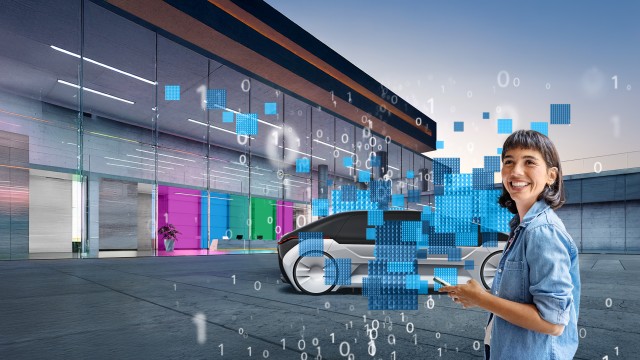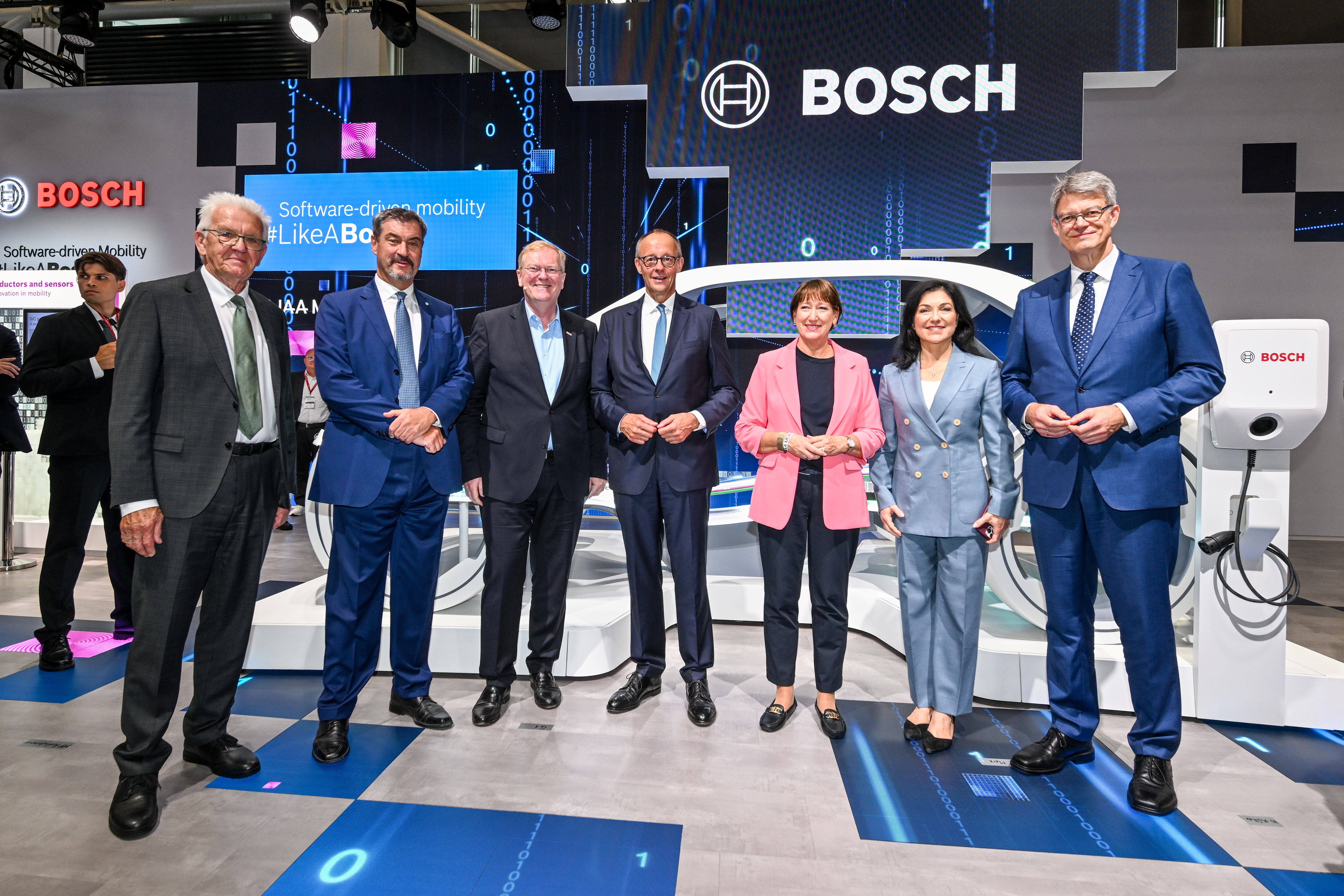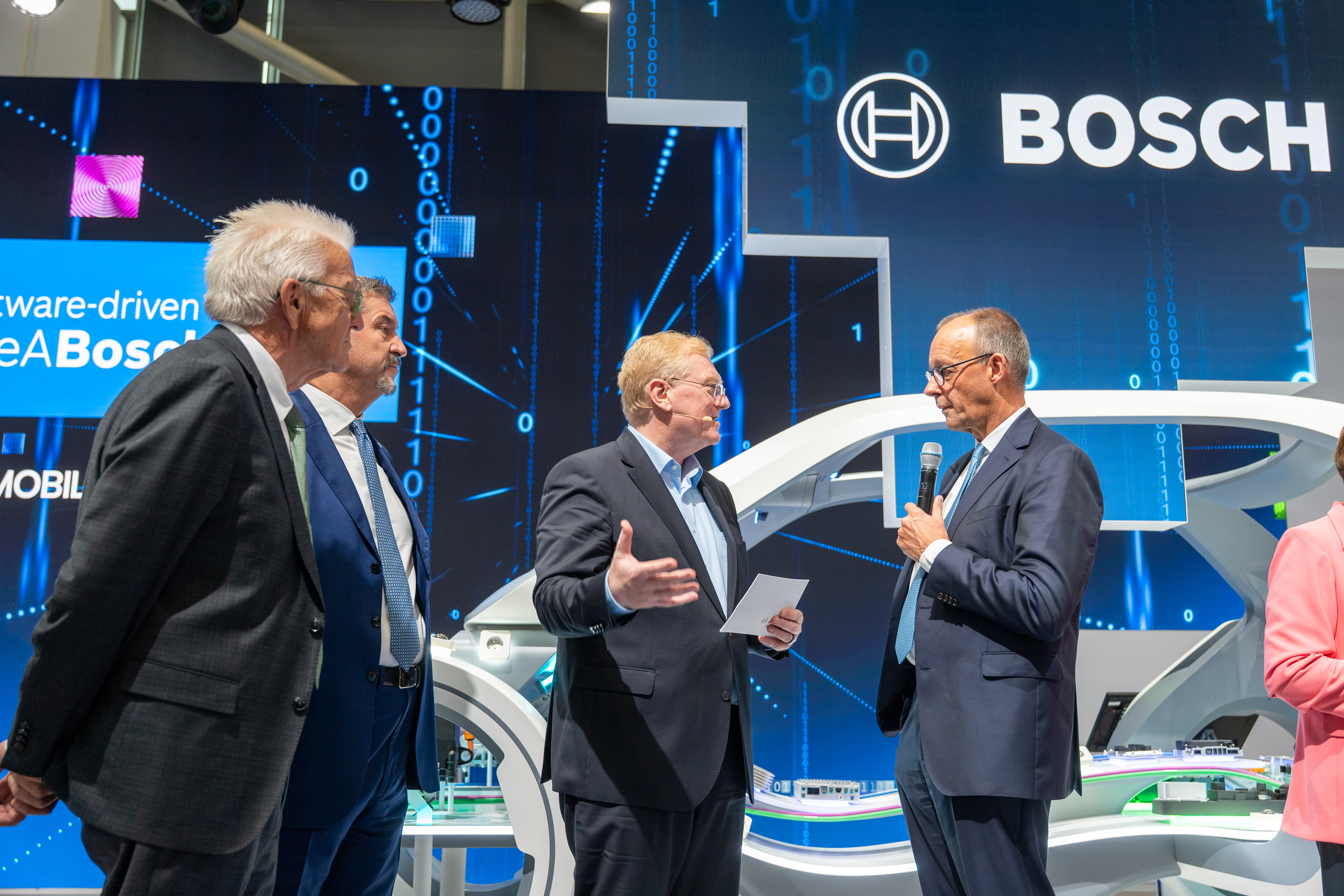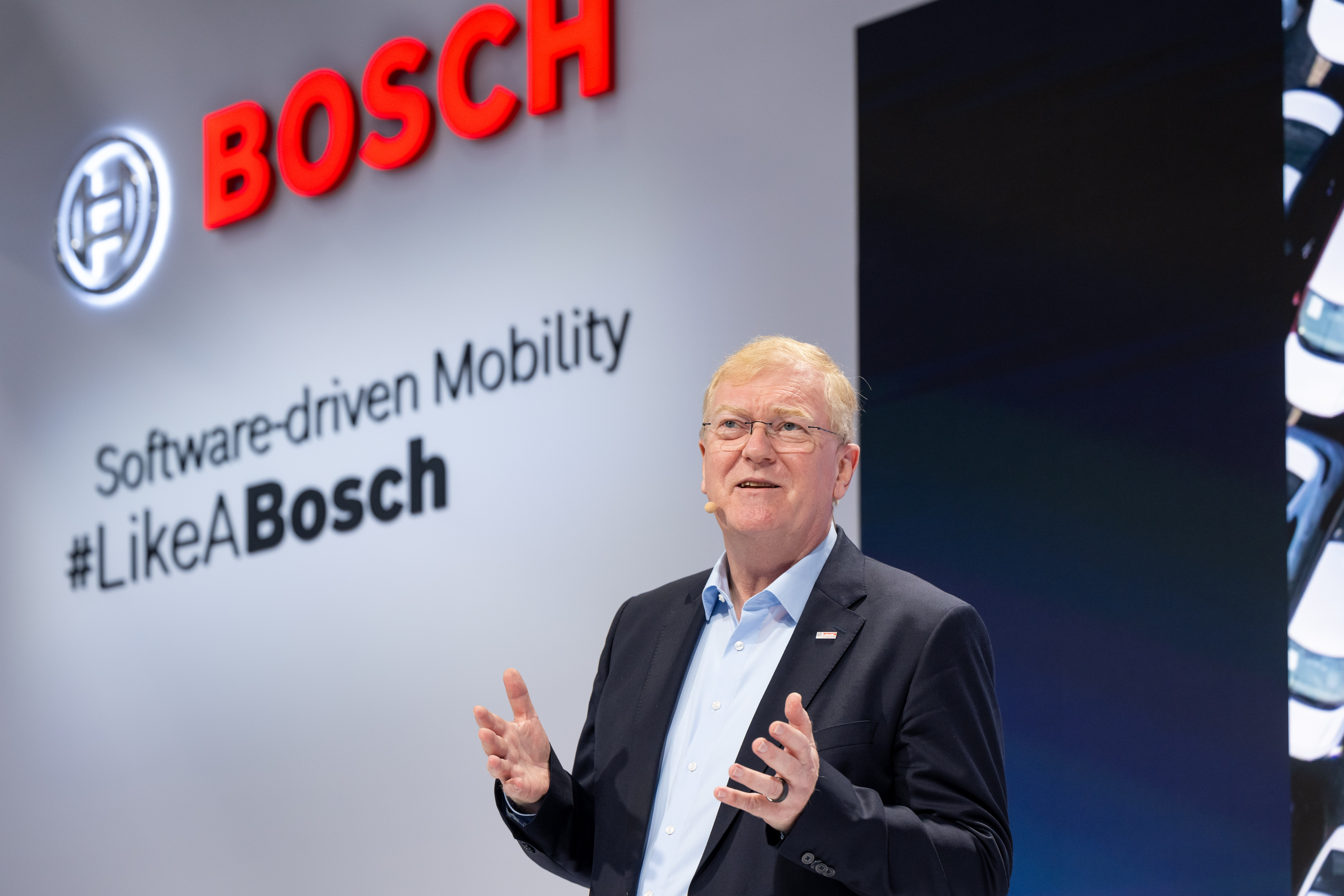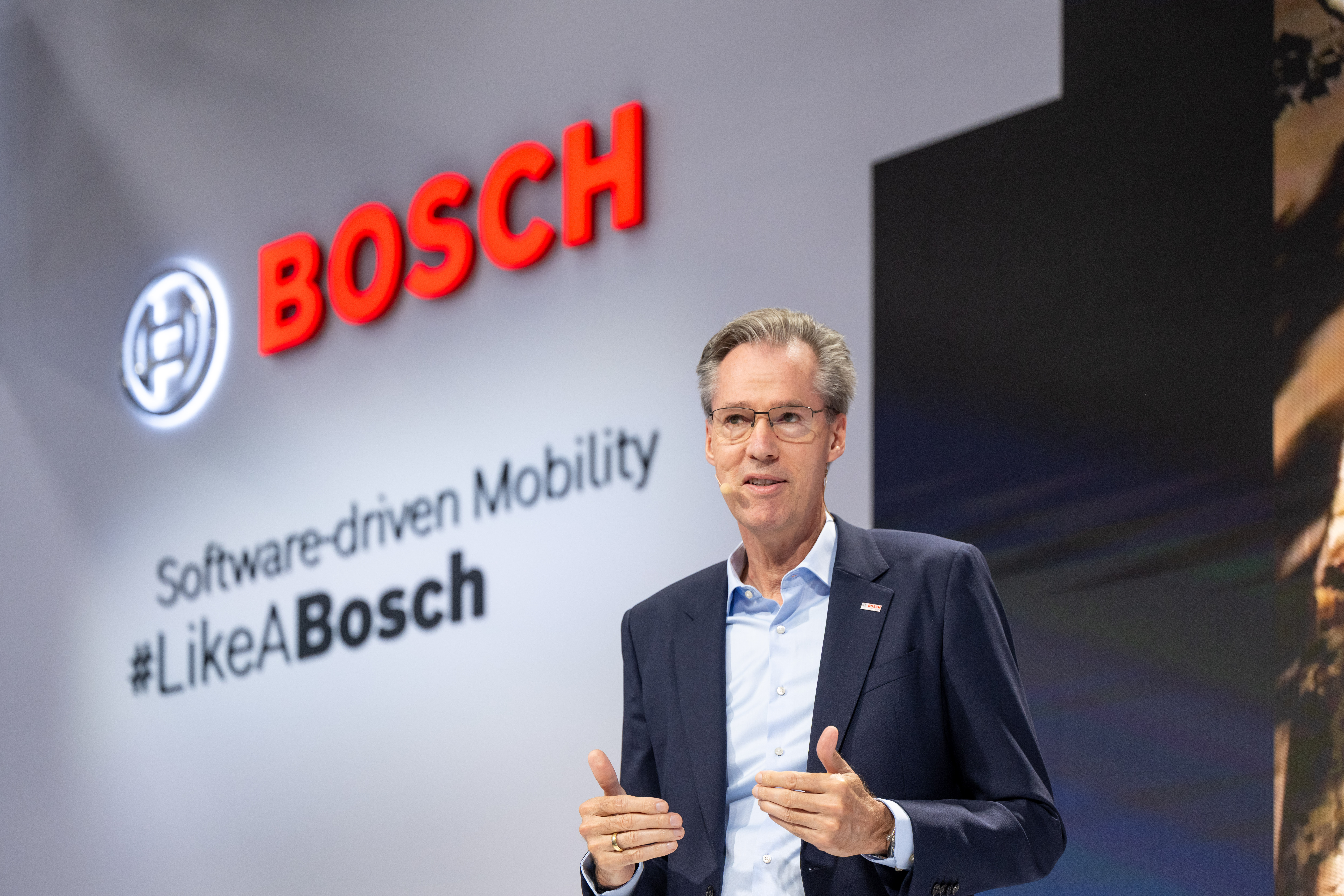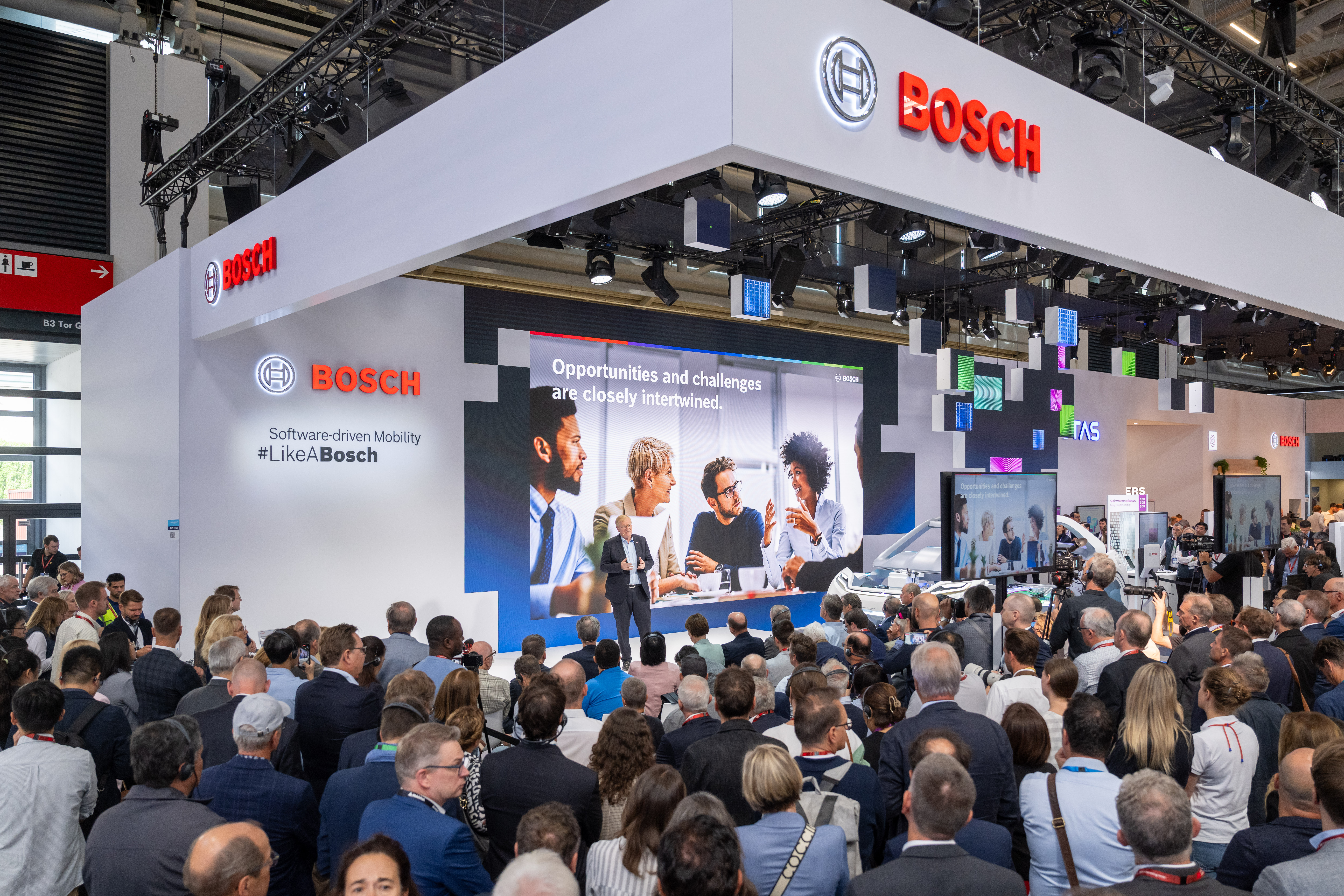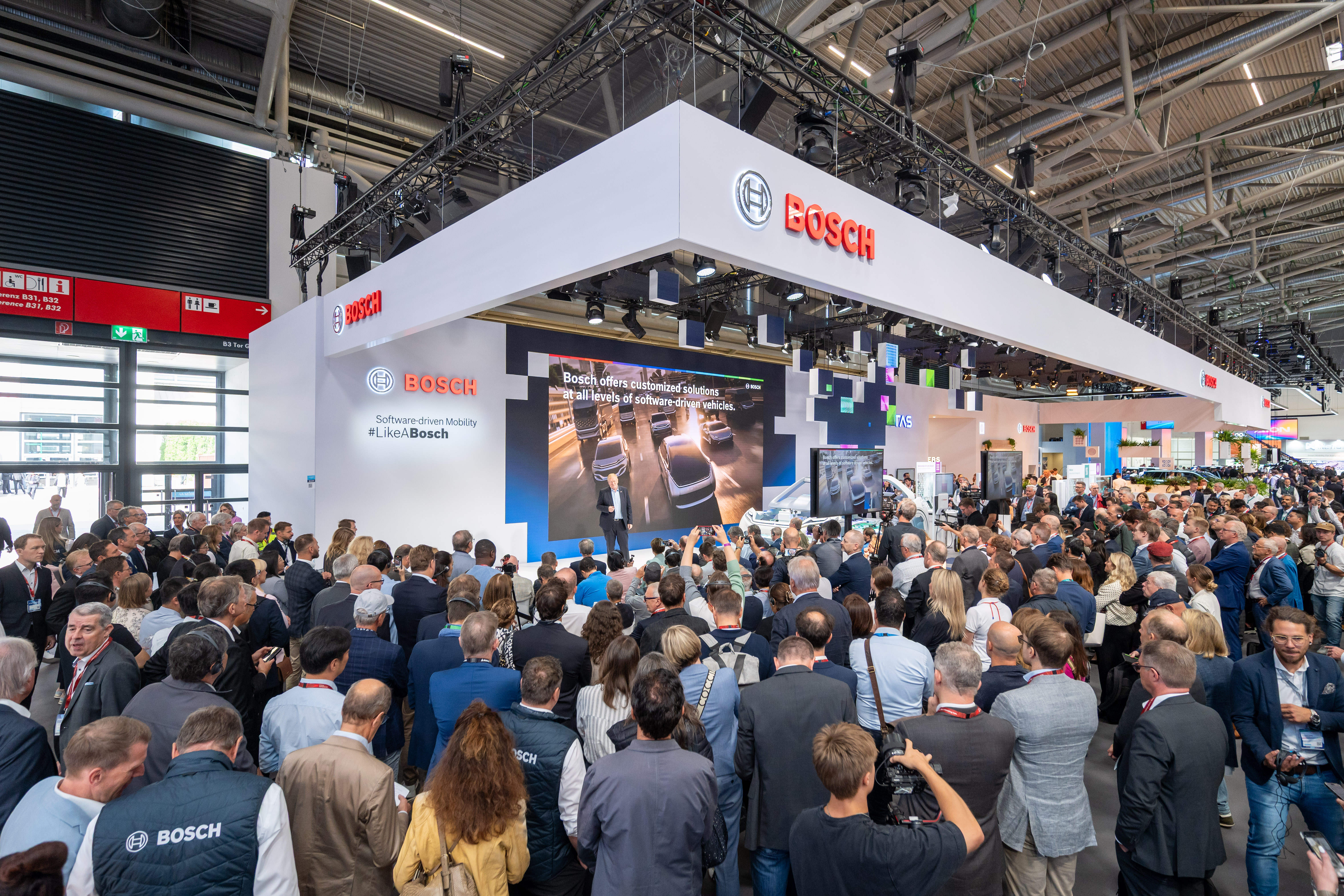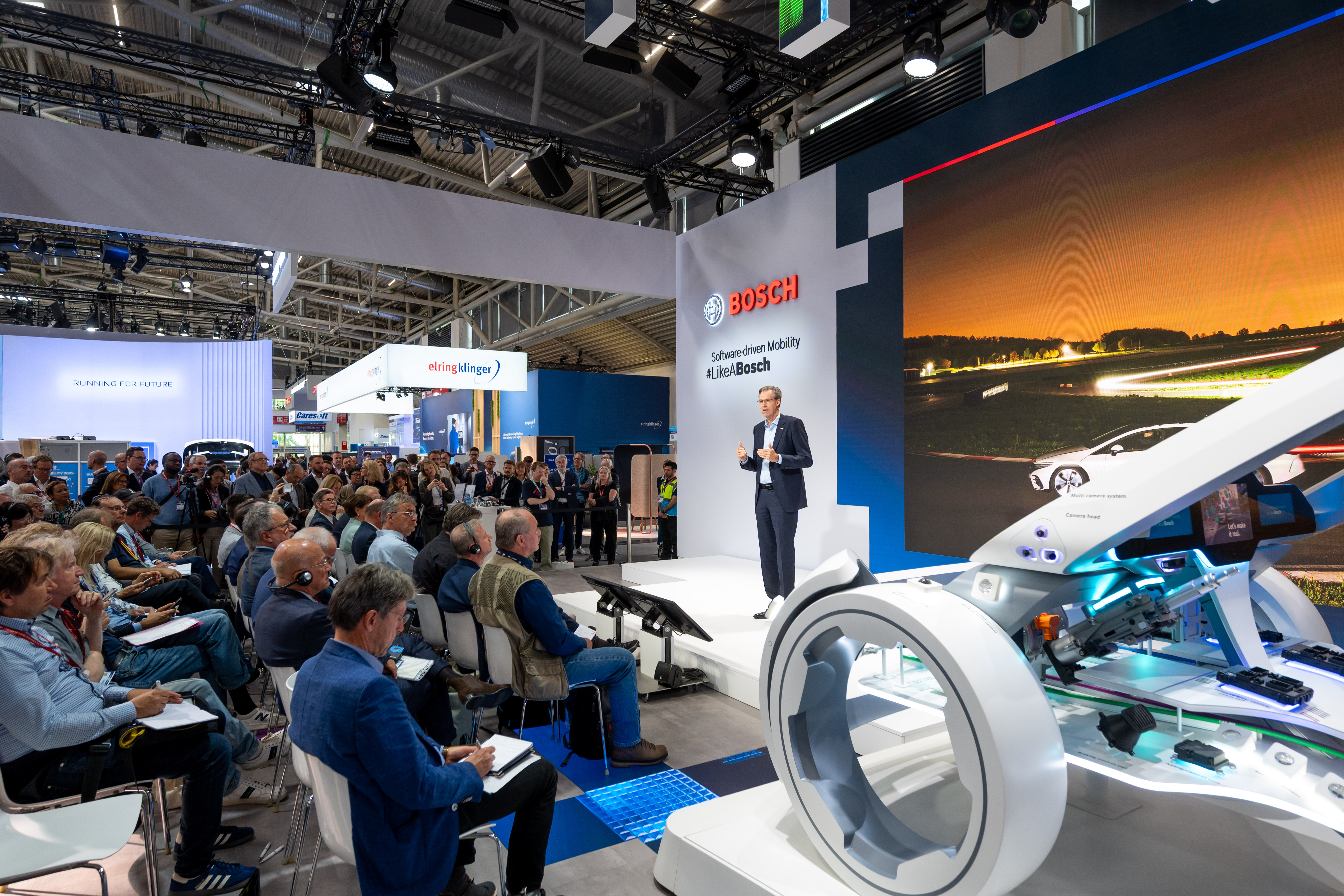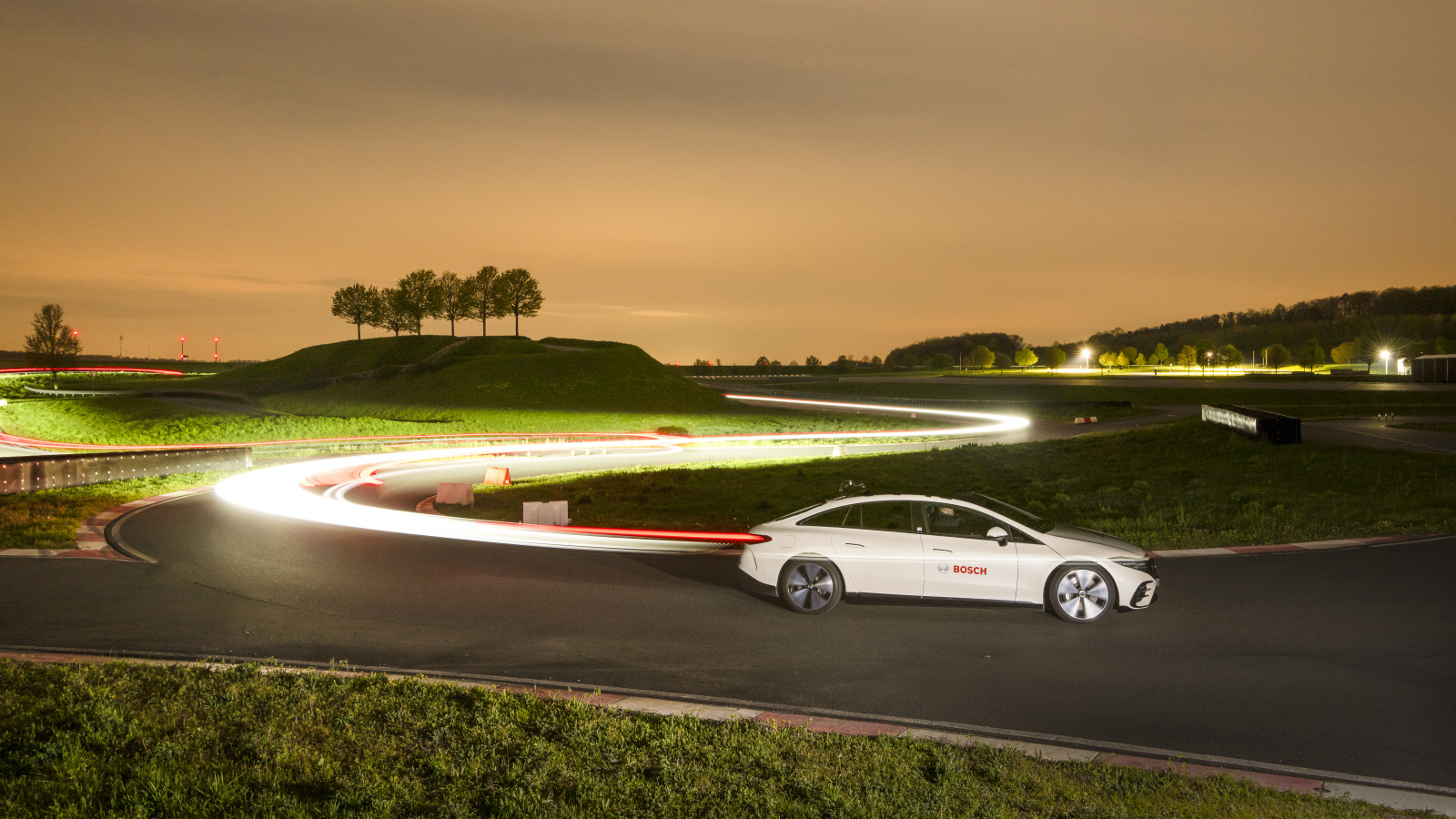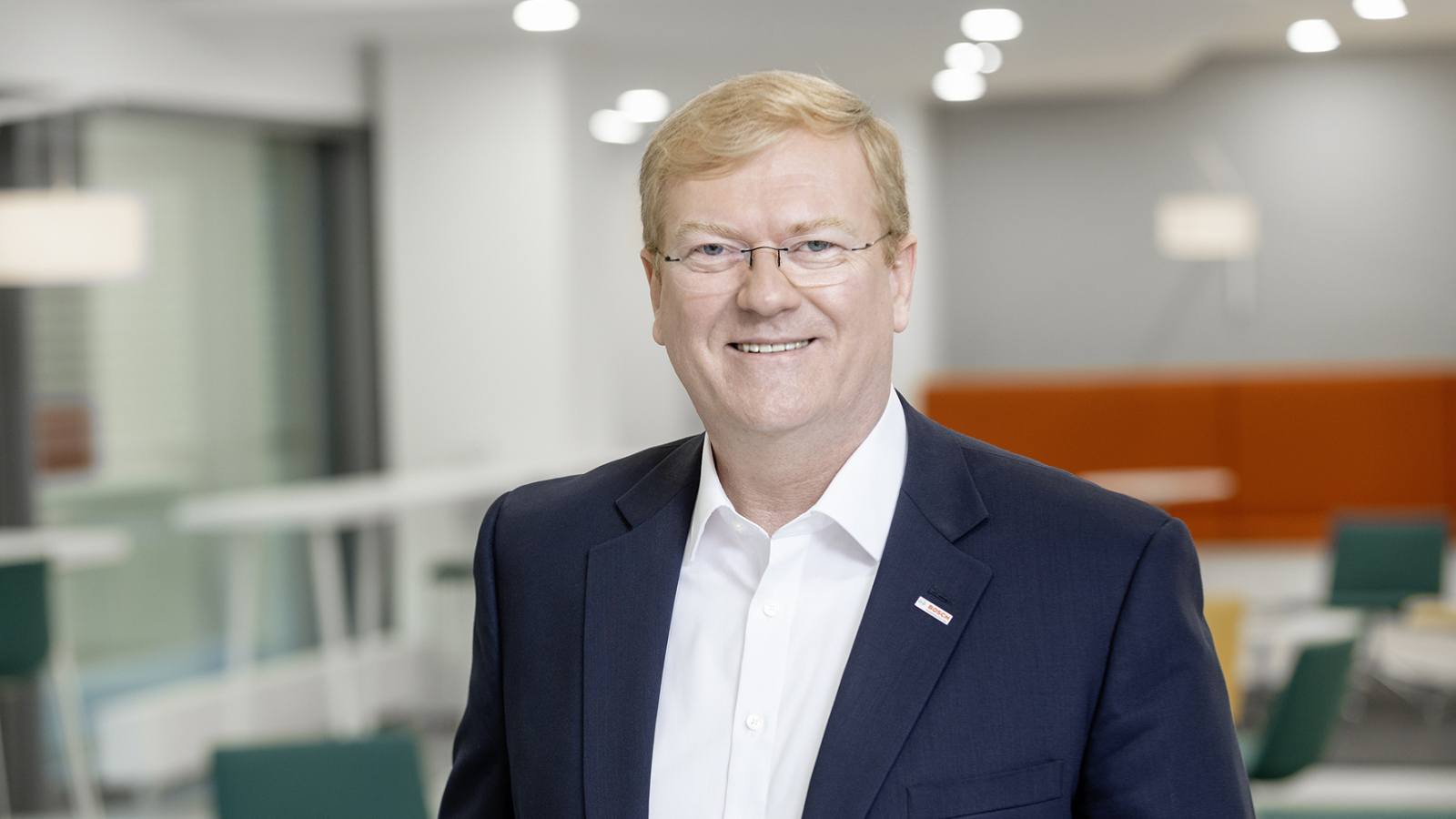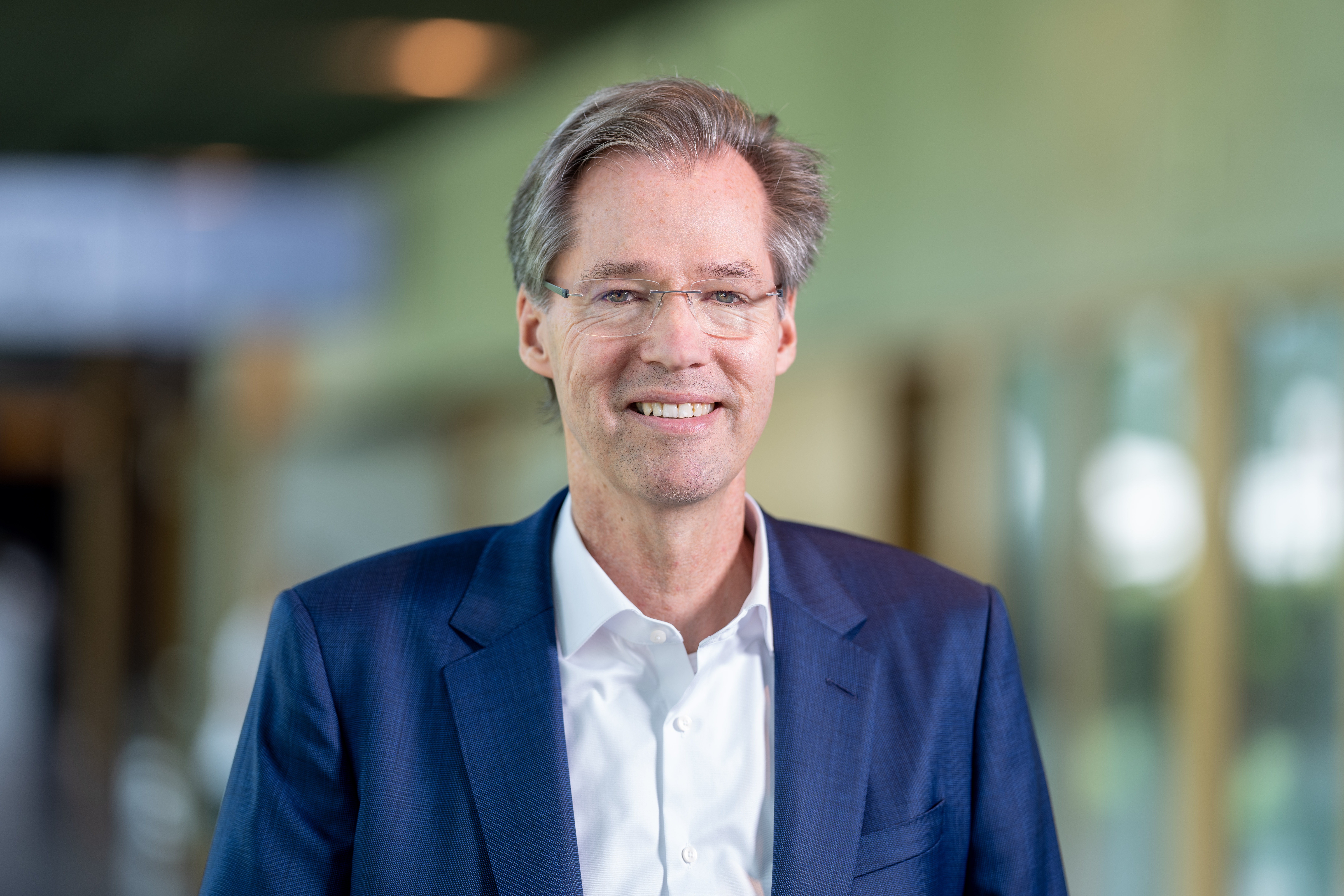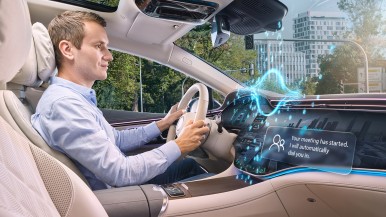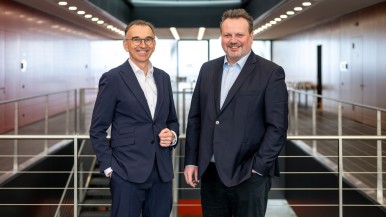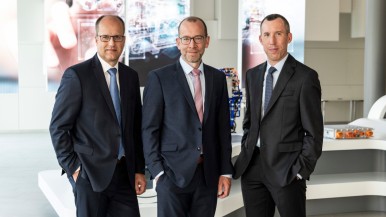Ladies and gentlemen,
The car of the future has about as much in common with the car as we know it today as a computer has with a mechanical typewriter. Both have a keyboard, on both you can write a letter – but that’s pretty much where the similarities end. Progress in cars has been similarly dramatic. Generally speaking, the vehicle of tomorrow will still have four wheels and transport us from A to B. But everything else will change profoundly.
Mobility will be more intelligent, more connected, and more efficient than ever before. And the real impetus for this development is, of course, the software. The age of software-driven mobility lies just ahead, and we at Bosch will play a key role in shaping it: as a driver of innovation, as a technology partner, and as a provider of customized solutions at all levels of software-driven vehicle development. And with that, I warmly welcome you to our press conference here at IAA Mobility.
Software-driven mobility will remake not only the car itself, but also primarily its development, production, maintenance, and use. New business models, new competitors, and shifts in value creation will change the entire automotive industry. Opportunities and challenges are closely intertwined – especially in light of the current economic and political tensions. For these reasons, we believe that, more than ever, those who want to succeed in the software-driven era need flexibility, in-depth systems expertise, courage to take risks, competitive costs, and strategic partners.
Bosch is actively driving this new vehicle world forward. Products for software-driven mobility are already in production worldwide. In China, we are one of the most important suppliers in this area and are an ideal partner for our customers. Our strong position in this lead market helps us offer competitive solutions worldwide while simultaneously adapting them to regional conditions. This is another reason why we can continue to expand our business in software-driven mobility. In a moment, my colleague Markus Heyn will tell you about some of the solutions that are particularly in demand.
At Bosch, we benefit both from the software expertise we’ve built up over many years and from our unique knowledge across all domains of vehicle technology. We’re at home with both hardware and software, separately or combined, standardized, integrated, decoupled – however the customer wants to have it. Because it will be as true tomorrow as it is today: without sophisticated hardware, even the smartest car won’t move a single millimeter. That’s why we must stay innovative in this area as well.
However, it’s also true that software-driven mobility, with its many new market players, is intensifying competition even further. And it’s not as if our industry has a shortage of challenges: global vehicle production has been stagnating for years, and in Europe, demand and production are actually falling. The slow take-up of electromobility and automated driving in the markets is also having a negative impact. Added to this are geopolitical uncertainties and the ongoing restrictions on trade flows.
Nonetheless, we will grow in the mobility sector in 2025, even if only slightly – probably by somewhat less than 2 percent. In any case, we will achieve our longer-term targets only if we remain competitive in the vehicle world of tomorrow. This is because software-driven mobility is likely to increase the pressure on margins even more. In response, we need to further adapt our structures to demand and reduce costs in all areas. We must also continue to win over our customers with attractive, innovative solutions for intelligent and connected mobility. My colleague Markus Heyn will now explain what these solutions will be...
Many thanks, Stefan, and a warm welcome to the IAA from me, too.
Up to today, a vehicle was never as new as the moment it was delivered. In the future, however, its software will be continuously updated and it will be constantly learning by means of AI. Drivers will be able to personalize their cars much more than they can today – from the interior to vehicle handling to infotainment. This turns the vehicle into a personal assistant and every kilometer into an individual experience. It’s a bit like transitioning from radio to your own playlist: personal preferences take the place of rigid formats. In other words, more than anything else, the new mobility is user centered.
One example of this is our Vehicle Motion Management, in which central software manages and coordinates various functions in the braking, powertrain, chassis, and steering systems. This means that these individual systems work together even better than before. Depending on the driver’s or passengers’ mood, the vehicle can behave either particularly flexibly or particularly smoothly – right up to a completely jolt-free halt. Automatic driver recognition or a simple press of a button is all it takes to make the car feel like a different one. The software required for this is decoupled from the hardware, which opens up multiple possibilities. For example, it can be integrated into different vehicle architectures or perfectly emphasize the brand-typical driving experience of the respective manufacturer. It can also be updated at any time.
The demand for Vehicle Motion Management is overwhelming – over two dozen automakers in Europe, China, and Japan are already using these software packages. And we’re continuing to develop software solutions. To this end, we’ll have invested a further nine-digit euro sum and expanded our modular software and function portfolio across all domains by 2028.
In short, we’re active in all areas that are important for the software-defined vehicle. This includes, for example, intelligent driver assistance systems such as our ADAS product family: vehicle manufacturers can choose from three preconfigured variants and then put them into production quickly and in a brand-specific way. Here, too, hardware and software can be integrated or purchased separately. In principle, an integrated approach is a considerable advantage with both options: only those who understand the interaction between hardware and software in detail can offer individually optimized solutions that can be seamlessly integrated into existing environments.
Such solutions also include our by-wire systems for brakes and steering. The mechanical connection is no longer needed; instead, software takes control. This reduces weight, enables fast and precise reactions, and brings variety to the car. Once again, it’s software that makes the difference. It enables braking and steering behavior to be adjusted and updated at any time – within the framework of safety regulations, of course. By-wire is a key technology both for automated driving and software-driven mobility. This is an important business for Bosch. With brake-by-wire and steer-by-wire, the company expects to achieve cumulative sales revenue of more than 7 billion euros by 2032. The market dynamics of this key technology will continue to accelerate in the 2030s.
By-wire technology illustrates the emerging sequence in vehicle construction: in the future, hardware will be designed to fit software requirements. This also applies to high-performance computers, such as those needed for intelligent cockpit systems. Such vehicle computers are central components in modern E/E architectures – the car’s brain and nervous system. In the software-defined vehicle, there will only be a few of these powerful computers instead of dozens of control units as is currently the case. This is a strong driver for us: our high-performance computer business is currently growing by more than 5 percent every year, with manufacturers such as the BMW Group among our customers.
Software-driven mobility includes our ADAS and cockpit integration platform as well. it simultaneously processes various functions in driver assistance and infotainment – on just one control unit and one system on a chip. This saves space, costs, and energy. The platform also has a modular structure and can flexibly integrate software from different manufacturers. For such a solution, you need to be very familiar with functional safety in the vehicle and in the cloud. And you also need exactly what Stefan mentioned earlier: experience and in-depth knowledge across all vehicle domains.
The same applies to the AI cockpit that we developed for SAIC GM in China. Informed by extremely large data sets from a large language model, a compact and powerful processor lets the driver talk to the vehicle in a natural way – almost like talking to a person. Production is scheduled to start this year.
Ladies and gentlemen, Bosch has been preparing for this software-driven future for years. We have completely reorganized our Mobility business sector and aligned our processes and methods with the new role software is taking. We have become more pragmatic, more entrepreneurial, and faster – and are creating a software and system architecture in which central computers and control units, sensors, semiconductors, hardware, and middleware are compatible and coordinated on a modular basis.
Nevertheless, the challenges posed by this fundamental change will remain with us for some time to come – especially as the transformation is not happening at the same pace in all markets and for all manufacturers. Our advantage here is not only that we have equal measures of expertise in hardware and software, but also that there is probably no other company where global presence and local knowledge come together as ideally as at Bosch. We will make good use of this opportunity.
And now I’ll hand back to Stefan – thank you very much!
Thank you, Markus. I think it has once again become clear how fundamental the upheaval is that we have to deal with, but which we naturally want to drive forward at the same time. To achieve this, we also rely on strategic partnerships, particularly where new business models and scalable software systems are concerned. In China, for example, we’re working together with WeRide and Horizon Robotics on solutions for assisted and automated driving, just as we are with the VW subsidiary Cariad.
And I assume that we will see many more such alliances in the future – at the latest when the transition to alternative powertrain systems picks up speed again. This is because the new electrified platforms also bring modern software architectures into the vehicles. In any case, we remain convinced that, in a few years, the battery-electric powertrain will be the predominant technology for new passenger cars worldwide.
However, this doesn’t mean that the combustion engine will disappear completely – especially as we expect an increasing proportion of high-performance hybrids in all global markets. This also includes range extenders, which are particularly successful in China. Here, a combustion engine charges the battery when required. For this purpose, Bosch offers injection technology and powertrain components, such as our electric motor. Range extenders, just like plug-in hybrids, should also be given a chance in Europe beyond 2035, as they can significantly reduce emissions. To this end, the regulatory framework must be adapted as soon as possible. Politicians need to clarify the use of renewable synthetic fuels, too, as development of the combustion engine here in Europe depends on this in no small measure. I would, at any rate, like to see regulatory provisions for the relevant vehicles take shape soon. Regardless, we already have a technological solution that shows whether or not renewable synthetic fuel has actually been used: with our Digital Fuel Twin, the origin and properties of the fuels used can be fully traced and certified.
Ladies and gentlemen, I think one thing has become very clear today: the age of domain-centered vehicle development is coming to an end. The future increasingly belongs to central architecture – efficient, intelligent, and updatable. It belongs to software and the hardware derived from it. It belongs to all those who bring speed and technology together while putting the focus on the user. As you’ve seen, we’re already well on our way. We’re helped by our innovative strength as well as our clear strategic focus with a clear objective: we want to remain a leading technology partner in software-driven mobility and successfully develop intelligent, connected vehicles, transportation systems, and services together with our customers.
Thank you!
